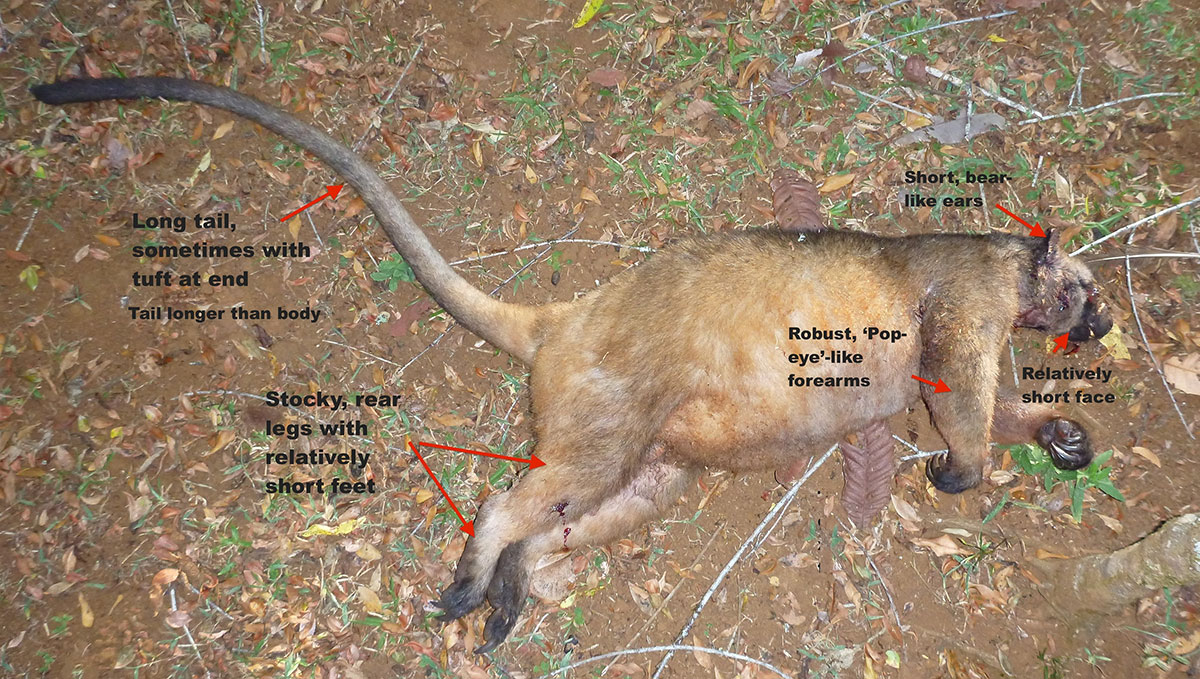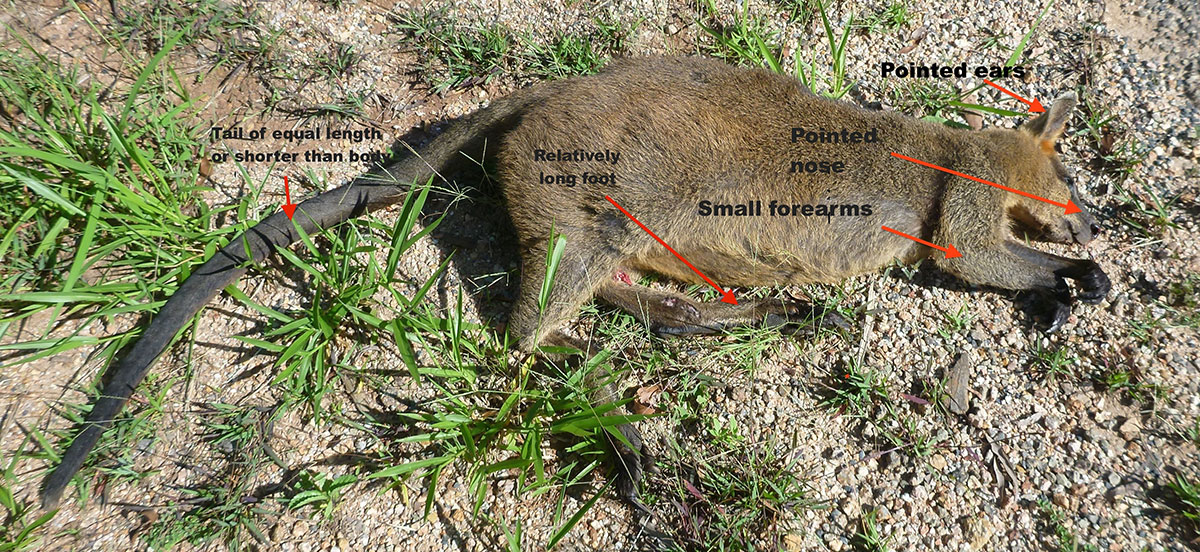Population & Health of Lumholtz's tree-kangaroo
The project has been completed and results published in a PhD thesis from James Cook University, 'Population and Health Status of Lumholtz's Tree-kangaroo on the Atherton Tablelands, Queensland.'.
The project was conducted by Roger Martin and Dr. Amy Shima (as part of her PhD project).
They can be contact via email: treekangaroo.study@gmail.com
Project Overview
The project is looking at 3 major facets. Mortality, Population and Health.
Mortality:
- Road Mortality
- Predation
Population:
- Where are they?
- How many are there?
- What is the population structure?
- What age do the females start breeding and how often to they have young?
Health:
- What are baseline biomedical values?
- What diseases are present in the population?
- What is the normal eye anatomy of LTK and what can be causing eye abnormalities and blindness reported in wild tree-kangaroos?
- Are there differences in the health of animals living in small patches/suburban areas compared to those living in large patches or in continuous forest?
Road Mortality Survey
The Road Mortality Survey gathers information about tree-kangaroos killed by vehicles. It enables dead tree-kangaroos to help us learn important information about the population of Lumholtz's tree-kangaroo on the Atherton Tablelands. The survey collects information on where tree-kangaroos are being killed by vehicles, as well as the demographics (sex, age class, reproductive status) and health of the animals. Information on characteristics of locations of road-kills is being collected and analyzed. This information may help us make recommendations on measures that could be undertaken to reduce the number of tree-kangaroos killed by vehicles.
An important part of this study is getting prompt notification of dead tree-kangaroos. If you see a dead tree-kangaroo on the road:
1. If it is safe to do so, please move the carcass off the road (so it doesn't get run over again) and leave it on the side of the road.
2. please ring: 0499-180-961 as soon as possible. Provide information as to the location of the carcass.
Once we get a report of a dead tree-kangaroo, we go to retrieve the carcass so a post-mortem examination (necropsy) can be performed and data collected.
For further information on reporting a dead or injured tree kangaroo using this page: Dead or Injured reporting page
How to identify whether a road-kill is a tree-kangaroo
How can you tell if a road kill is actually a Tree Kangaroo? Sometimes wallabies or even possums can be mistaken for a tree kangaroo. While we will go check out any report of a dead tree-kangaroo, it will really help us out (and save us time and energy) if you take a few moments to learn about the identifying features of a tree-kangaroo compared to a wallaby or possum.
Tree Kangaroo-Identifying Features

Wallaby-Identifying Features

Population
This project is gathering information on the population of Lumholtz's tree-kangaroo. Data being collected will help us establish the current status and trends in the population. To put it simply, we are trying to find out whether the number of tree-kangaroos is stable, decreasing or increasing. To understand what is happening to a population, we need to know how many animals it contains (the density of the population) and whether its numbers are increasing or decreasing. To establish whether the population is increasing or decreasing, we need to know the birth rate and mortality (survival) rate of the population. Figuring out the birth rate of a population involves learning about the reproductive biology of the animal. This includes establishing whether breeding behaviors are limited to a particular season; the age at which females start to reproduce and the interval between births and the survival rate of dependent young (1-2 year olds), particularly females.
Population biology studies require that animals be followed over a long period in order to gather the information needed to be able to analyze what is going on with the population. Our study is still in its early stages. It is the first study to look at tree-kangaroos over a wide range of habitats rather than focusing on a population living in a single area.
Health
The health status of Lumholtz's tree-kangaroo has never been investigated but is currently the subject of a PhD project. The project aims to establish baseline medical information about the species, survey for infectious diseases, investigate what impact humans and their animals may be having on tree-kangaroos (and vice-versa) and investigate road and predator mortality with the hope that information gained may be useful in future management decisions about the species and in advising veterinarians and wildlife carers about typical injuries sustained from vehicles and predators with the aim of improving animal welfare and reducing suffering.
Far North Queensland ONLY-Click here to report a dead or injured Tree Kangaroo
